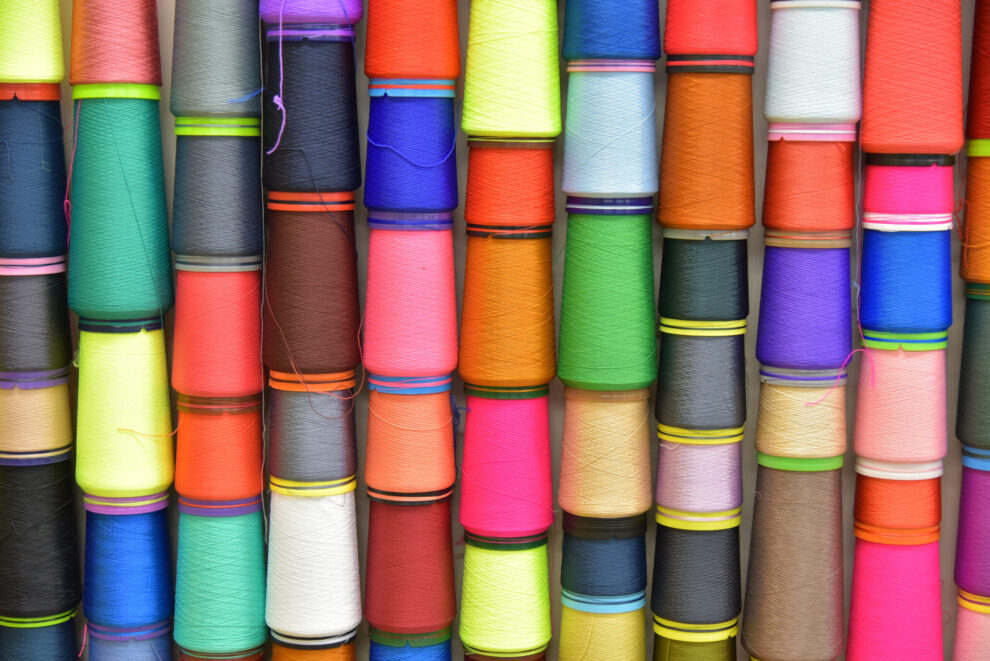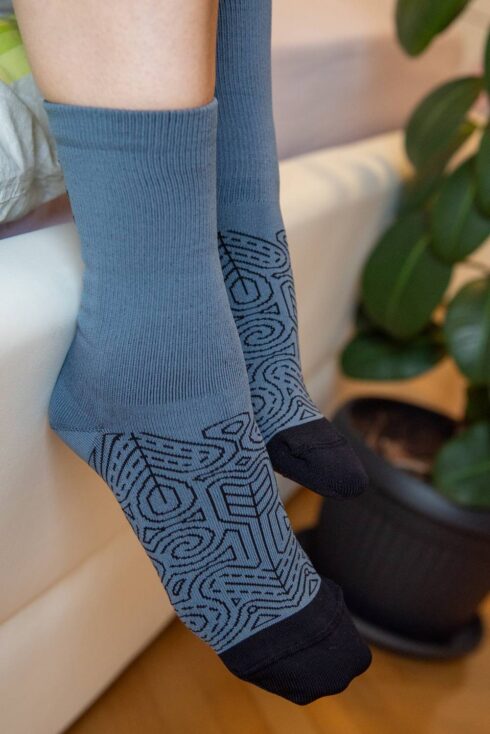Natural vs. Synthetic: Is Nature Always the Sustainable Choice?
How quickly are you prone to labeling a type of textile as sustainable or not? Many of us are drawn to clear-cut answers: natural is good, synthetic is bad. But in reality, the story behind fibers is far more complex. When sustainability comes into play, assumptions need closer inspection.
Fiber Classification – More Than Meets the Eye
Textile materials can originate from agriculture, forestry, or petroleum. Based on production processes, fibers are traditionally grouped into three main types:
- Natural fibers: Derived from farming and processed mechanically (e.g., cotton, wool).
- Chemical/man-made cellulosic fibers: Produced from forestry resources via chemical transformation (e.g., viscose, modal).
- Synthetic fibers: Created through synthesis from petrochemicals (e.g., polyester, polyamide).
Vegan – sorry to disappoint you, but almost all textile materials are vegan, except those based on animal resources (wool, silk, leather). Is polyester vegan? Yes, it is. So using a fancy name like »vegan silk« for polyester yarn is not something we support.
Table: Traditional Fiber Classification by Production Process
| Fiber Type | Production Process | Examples |
| Natural fibers | Mostly mechanical | Cotton, Wool, Silk, Hemp |
| Chemical (man-made cellulosic) fibers | Chemical transformation of cellulose | Viscose, Modal, Lyocell |
| Synthetic fibers | Chemical synthesis (polymerization) | Polyester, Polyamide (Nylon), Acrylic |
The Emotional Weight of Words
The word “natural” carries positive connotations. But is it always justified? Asbestos, though natural, is a well-known health hazard. Similarly, bamboo is often promoted as a natural fabric. Yet, what we commonly call “bamboo” in textiles is actually bamboo-based viscose — a chemically processed fiber. It’s more accurate to classify it as a man-made cellulosic fiber.
A more sustainability-focused classification would consider resource type (renewable vs. non-renewable) and end-of-life potential (biodegradable or recyclable).
All Fibers Involve Chemistry
Regardless of their origin, no textile material is chemical-free.
- Cotton may be grown with pesticides and fertilizers unless organic. Its processing can include mercerization (using sodium hydroxide), flame retardants, or dyes.
- Viscose production requires chemicals like carbon disulfide and sulfuric acid — toxic to both workers and the environment.
- Synthetic fibers such as polyester involve complex polymerization and high-temperature dyeing, using chemicals that can release microplastics and VOCs.
End-of-Life Matters
True sustainability also considers what happens after the garment’s life ends. Materials should be either biodegradable or recyclable — but few are both. Problems arise when different fibers are blended.
Biodegradable vs. Recyclable: Understanding End-of-Life Options
In sustainable textiles, end-of-life options are just as important as production processes. Two key strategies stand out: biodegradability and recyclability. While they are often mentioned together, they represent different paths toward reducing textile waste.
Biodegradable textiles are materials that break down naturally over time with the help of microorganisms, turning into water, carbon dioxide, and biomass. This process typically requires specific environmental conditions—moisture, oxygen, and heat—to occur efficiently. Examples include organic cotton, hemp, wool, silk, and man-made cellulosic fibers like lyocell. These materials offer the advantage of naturally returning to the environment, especially when disposed of in composting systems. However, biodegradability is not a free pass—many natural materials are treated with dyes, finishes, or synthetic blends that inhibit decomposition.
On the other hand, recyclable textiles are designed to be processed and re-used in new products, either through mechanical or chemical recycling. This includes both natural fibers like cotton and wool (when pure), as well as synthetic fibers like polyester and polyamide. Recycling helps reduce dependency on virgin resources and diverts waste from landfills. For example, recycled polyester made from PET bottles or used garments is widely accepted as a more sustainable alternative to virgin polyester. However, recyclability hinges on the fiber purity. Blended fabrics—such as cotton-polyester or polyester-elastane—remain a significant technical barrier due to the complexity of separating components. In Beti we focus on 100% mono-composition yarns. Learn more about recycled polyester yarn at Beti
Example: Socks and End-of-Life Dilemma
Look at the composition label on your socks. Most everyday socks are made from a blend such as cotton and elastane, or polyester and elastane. Performance socks might include combinations like wool, nylon, and elastane. These multi-fiber blends make recycling extremely difficult and uneconomical. While the cotton or wool components may eventually biodegrade, the synthetic parts often persist. And if the synthetic content is too high or combined with elastane, biodegradability is not an option either.
Currently, recycling efforts are advancing primarily for single-fiber socks — for example, pure polyester or nylon socks with minimal elastane content. But mass-market options rarely fit this profile. The reality is that most socks today cannot be successfully recycled or composted.
According to Textile Exchange, designing for recyclability is one of the five pillars of their Preferred Fibers and Materials framework. Materials with clear recycling routes and strong durability scores are given preference, especially if they support circular systems like textile-to-textile recycling. The industry is also moving toward mono-material products, which are easier to recycle, and fiber identification technologies to support accurate sorting.
Importantly, a material being recyclable or biodegradable is not enough—infrastructure must exist to handle it. Without access to composting facilities or specialized recycling plants, even the most eco-friendly material may still end up in landfill.
Ultimately, the choice between biodegradable and recyclable isn’t binary. Each has its role, depending on the product type, intended use, and disposal system. The best design decisions consider these pathways early—ensuring that materials serve their purpose while minimizing long-term environmental impact.
Challenging the Natural Equals Sustainable Assumption
The idea that natural is inherently better overlooks important factors:
- Input use: Natural fibers often require large amounts of water, land, and chemicals.
- Performance: Synthetic fibers can outperform natural ones in durability, moisture management, and recyclability.
- Circularity potential: Pure synthetic fibers are easier to recycle than blended fabrics.
Case Study: Socks Durability Test
Using a Martindale abrasion tester, socks made from cotton, polyester, and polyamide were tested under controlled stress conditions. The results revealed a clear durability winner: polyamide 6.6. These socks endured far more abrasion before showing wear, while cotton socks began degrading quickly. This matters because a more durable sock means fewer replacements, which lowers overall material use and waste.
See our #special features section on how Beti can further upgrade your yarn for socks.
This trade-off — between durability and recyclability — is at the heart of textile sustainability. It emphasizes the importance of design decisions that balance lifespan, recyclability, and environmental impact.
Preferred Fibers and Materials – The Textile Exchange Approach
To provide clarity in a complex textile landscape, the Textile Exchange introduced the concept of “Preferred Fibers and Materials.” These are defined as materials with improved environmental and/or social performance compared to conventional options. Their evaluation framework spans five key criteria:
- Feedstock Source: Materials derived from certified renewable resources are preferred (e.g. organic cotton, FSC-certified wood for lyocell) or recycled content (e.g. GRS-certified recycled polyester).
- Processing: The material must undergo environmentally responsible and socially safe processing. This includes lower chemical toxicity, reduced water and energy use, and improved worker safety. Standards such as bluesign® and OEKO-TEX® are often referenced here.
- Traceability and Product Integrity: Textile Exchange emphasizes robust chain-of-custody systems. This ensures that preferred materials can be verified and tracked from raw input to final textile product.
- Sustainability Claims: Any benefits or claims must be scientifically verified through credible methods, such as life cycle assessment (LCA), to prevent greenwashing.
- Circularity Potential: Preferred materials should be designed with the end in mind—considering recyclability, biodegradability, disassembly, and long-term durability.
The Preferred Fiber and Materials Matrix maintained by Textile Exchange also lists specific examples. For instance:
- Preferred cotton includes Organic, Fairtrade, Better Cotton, and transitional cotton.
- Man-made cellulosics like lyocell and modal are considered preferred when produced in closed-loop systems (e.g. Lenzing TENCEL™).
- Recycled synthetics such as GRS-certified polyester reduce dependence on virgin fossil fuels. Visit our Sustainability section to explore what Beti is doing in practice.
- Innovative materials like Spinnova® (mechanically processed wood fiber) and Circulose® (recycled textile pulp) represent promising advances.
Ultimately, this classification supports more responsible decision-making across the textile value chain—from designers and brands to manufacturers and consumers. For more on OEKO-TEX® and GRS certification, see our certifications page.
Conclusion: A More Nuanced Approach
Natural isn’t always better. Each fiber type has its trade-offs. A garment’s sustainability depends not only on its raw material but also on how it’s designed, processed, used, and disposed of. Rethinking fiber classifications and sustainability claims leads to better, evidence-based decisions in the textile industry.
Keywords: natural vs synthetic fibers, sustainable textiles, biodegradable fabrics, recyclable materials, textile sustainability myths, fiber classifications, chemical use in textiles, preferred fibers, textile exchange



